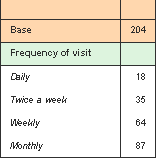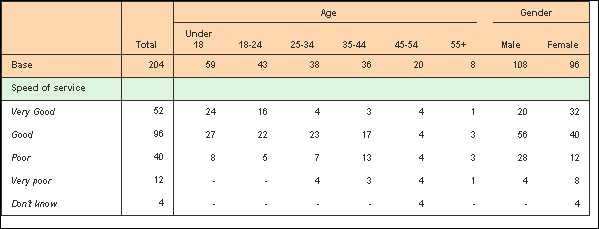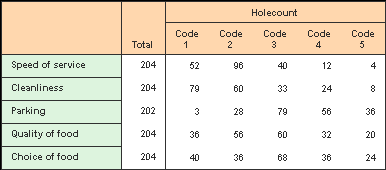Types of table
Frequency table
A table of results for one or more variables entered in the Analysis field. A frequency table displays the number of cases for the variable(s). Use WITH or a semi-colon to link them together. The maximum number of rows or columns is 2000 values. No value should appear in the Break field. (You can also build a frequency table from an expression in the Break field with nothing in the Analysis field.)

Cross-tabulation
This is a table where two or more variables are mapped against each other. One set appears in the Analysis and the other in the Break field. Use WITH (:) or PER to link multiple variables. A cross-tabulation displays the data for cases that appear in both categories.

Grid table
Used for tabulating grid questions. Enter the word TO or ~ between the first and last grid question numbers in the analysis field or list questions separated by commas. You can also enter the word GRID in the Break field or select Grid table from the dropdown list.

Holecount table
Holecount tables display the counts in the variables, as the code labels do not appear: just Code 1, Code 2, etc. They are a useful method of checking the accuracy of data entry and a simple way of highlighting areas with possible errors prior to full analysis of the survey. Select Holecount table from the dropdown list in the break or analysis field.

Descriptive statistics table
Statistics tables display a selection of statistics about the variable. Enter the word STATS or select Statistics table from the dropdown list in either the Analysis or Break field. Statistics can be calculated on any variable or list of variables, although most benefit is achieved when analysing variables with a response of Quantity.
